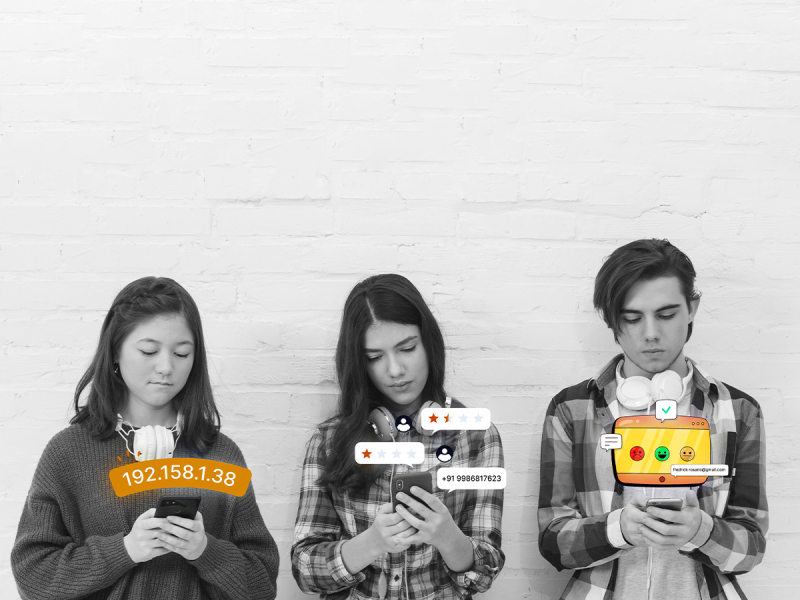Device IDs and their relevance to Digital Ads

The ever-changing landscape of digital advertising often involves approaching individuals via multiple channels and devices. For the most part, a modern-day household comprises 3-4 smartphones and at least 2 laptops. As of 2020, every individual has 3.6 devices that are a part of a network. Close to 1.134 trillion MB of data was created every day in 2021, and data consumption figures are increasing exponentially with the passage of every year as well. It is safe to say that portable devices are contributing to data consumption and generation like never before.
This increment in data consumption and the number of devices becoming a part of a growing network is staggering. Advertisers and publishers are making the best use of this paradigm shift with the deployment of advertising techniques using device IDs. Personalization has become the advertising and marketing norm now; every person needs to feel special. In fact, hyper-personalization has become one of the most promising trends in the marketing realm. However, a lot of users do not realize the fact that device IDs contribute a major share to the identification of their interests, buying prowess, and the e-commerce activities they take part in.
So, what is this Device ID thing?
Simply put, a device ID is a unique identifier for your smartphone or tablet. Most commonly associated with mobile devices, a device ID is a combination of numbers and alphabets that defines your device in a network.
When you buy a mobile device, it comes with its own unique device ID. Now here’s the thing, this device ID is then retrieved by an application that requires it and has been installed on the same device with your permission. The retrieval process remains the same for applications that are pre-installed on your device as well.
Device IDs work in a manner that provides credit to the advertisement that drove a positive action and ended with a conversion. For example, if a person clicks on an ad on a social media feed, they’ll be redirected to the app store of the operating system they use. Once there, they’ll download and install the application on their smartphone. Upon the completion of this process, the SDK will record the instance of the installation process and match the device ID to the view ID. And that’s how the advertisement gets the credit for the app’s download and installation.
Okay, so why does it matter to digital advertisers?
As it turns out, device IDs can not only help you identify the user and the device they’re active on, but it also helps you identify their behavior and segregate them into useful cohorts. The extraction of insights from the data sets received helps the advertisers and publishers to analyze and establish correlation algorithms and models that support the buying intent and behavior after the said purchasing action.
Actionable items are what everyone looks for, be it the end-user or the advertiser and publisher. The availability of the same via assistance from device IDs helps understand and paint the bigger picture as well. If your customer is interested in buying your product, chances are that they might recommend the same to their friends and family members as well. However, with this newly found pool of possible customers, you may not find the same interest being shown to your product, quite opposite to the way customer zero (the first customer) showed interest.
Once enough device IDs are fed to the pool, sophisticated algorithms with unsupervised learning, federated learning, and reinforced learning take over the analysis part. The taxonomy then dictates the formation of cohorts based on multiple variables that may define a person and their behavior in general. These cohorts might be based on their age, gender, income, recent purchase, location, purchasing frequency, intent, etc. Correlation can be established with the right assessment of your audience.
What does its future look like?
While device IDs have been of great help to advertisers and publishers, for now, the same cannot be said about their role in the future. The world is moving towards a privacy-first environment where every user’s data is safe and secure. Brands that have been leveraging the third-party cookie bandwagon for years now might have a tough time in the near future identifying the same user they used to know so well. The introduction of international regulatory authorities and laws such as the General Data Protection Regulation (GDPR), and the California Consumer Privacy Act (CCPA) have established the groundwork of data privacy in the modern age.
The reliance on third-party cookies for device and customer identification has been eliminated by a few major players, Apple happens to be a prominent example. Google on the other hand has proposed to eliminate the existence of third-party cookies by 2024. Apple, with its iOS 14.5 has made its IDFA (their proprietary device ID lineup) an opt-in feature. It means that if a user is interested in sharing their data voluntarily, they may enable their IDFA. If not, their data shall not be relayed to the ones looking for it.
So that’s what it boils down to
Device IDs aren’t going to extinct, however, their participation in the mapping of a person’s buying behavior is sure to be restricted. The advertising realm has come up with creative ways to work around the system and retrieve the data they need via legal methods. Cohort-based audience creation, mixed media modeling, and contextual advertising are some alternatives that eliminate the heavy reliance on device IDs and third-party cookies.
If you’re an advertising or publishing professional looking for ways to reduce reliance on device IDs and third-party cookies, then Cubera is here to help you. With our sophisticated state-of-the-art algorithms and tools, we can help you gather the right audience and engage them with the right message, at the right time.


